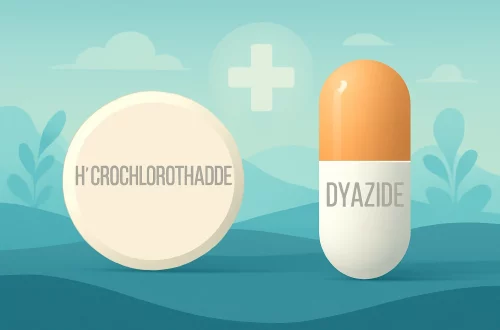
Understanding and Preventing Dog Diaper Rash: A Comprehensive Guide
Dog diaper rash is a condition that many pet owners may not consider until it arises, yet it can significantly affect the comfort and well-being of our furry friends. Just as infants can experience diaper rash due to prolonged exposure to moisture, so too can dogs, especially those who require diapers for medical reasons, incontinence, or seniority. This rash can manifest as redness, irritation, and discomfort in the affected areas, leading to unnecessary suffering for our beloved pets.
Understanding the causes and symptoms of dog diaper rash is essential for every dog owner. Proper knowledge can help in both prevention and treatment. Factors contributing to diaper rash include moisture, friction, and lack of proper ventilation in the diaper area. Additionally, certain skin conditions or allergies can exacerbate the issue. Recognizing the early signs of a rash can lead to timely intervention, ensuring that your dog remains happy and healthy.
In this comprehensive guide, we will delve into the various aspects of dog diaper rash, including its causes, symptoms, and effective prevention strategies. By being informed, pet owners can provide the best care for their dogs and prevent discomfort before it escalates into a more severe condition.
Causes of Dog Diaper Rash
Understanding the underlying causes of dog diaper rash is the first step in preventing it. Several factors can contribute to the development of this condition. One of the primary causes is prolonged exposure to moisture. When a dog wears a diaper, urine and feces can create a damp environment that irritates the skin. This moisture can lead to inflammation and even infection if not addressed promptly.
Friction is another significant factor. Diapers that do not fit properly can rub against the dog’s skin, causing irritation. It’s crucial to select a diaper that accommodates your dog’s size and shape to minimize friction. Additionally, if the diaper is too tight, it can restrict airflow and trap moisture, further exacerbating the problem.
Skin conditions and allergies also play a role in diaper rash. Dogs with sensitive skin may be more prone to irritation from the materials used in diapers. Certain fabrics or chemical additives can trigger allergic reactions, leading to redness and discomfort. Keeping an eye out for any changes in your dog’s behavior or skin condition can help identify potential allergies.
Lastly, poor hygiene practices can be a contributing factor. Regularly changing the diaper, cleaning the affected area, and ensuring proper ventilation can go a long way in preventing diaper rash. Neglecting these basic hygiene measures can create an environment conducive to rashes and infections.
Identifying Symptoms of Diaper Rash
Recognizing the symptoms of dog diaper rash is essential for prompt treatment. The most common signs include redness, swelling, and irritation of the skin in areas covered by the diaper. You might notice your dog scratching or licking the affected area more than usual, which can indicate discomfort.
In more severe cases, the skin may develop sores or lesions, and the dog may show signs of pain, such as whining or reluctance to move. If you observe any of these symptoms, it’s crucial to inspect the diaper area to assess the condition of the skin.
Another symptom to watch for is changes in behavior. If your dog seems more irritable, restless, or has a decreased appetite, it could be a sign that they are experiencing discomfort due to diaper rash.
Additionally, some dogs may develop a foul odor emanating from the diaper area, which can indicate an infection. If you notice any unusual smells, it’s essential to consult your veterinarian as soon as possible.
Keeping track of your dog’s grooming and hygiene routine can help in identifying these symptoms early. Regular inspections of the skin can help catch diaper rash before it becomes a more severe issue, allowing for quicker intervention and treatment.
Effective Prevention Strategies
Preventing dog diaper rash is often more effective than treating it after it occurs. One of the best ways to prevent this condition is to ensure that your dog wears the right size diaper. A well-fitting diaper will not only reduce friction but also allow for better airflow, keeping the skin dry and comfortable.
Regularly changing the diaper is also crucial. Depending on your dog’s needs, this may mean changing it several times a day. Keeping the area clean and dry is essential; use gentle wipes or a damp cloth to clean the skin during each change.
In addition, consider using a barrier cream or ointment designed for pets. These products can create a protective layer on the skin, helping to prevent irritation from moisture and friction. Consult your veterinarian for recommendations on safe and effective products to use.
Another preventative measure is to give your dog time without the diaper whenever possible. Allowing the skin to air out can significantly reduce the risk of developing a rash. This is especially important after bath time or if your dog has been indoors for an extended period.
Lastly, maintaining a regular grooming routine will help keep your dog’s skin healthy. Regular brushing and bathing can help remove any debris or irritants that may contribute to diaper rash. Always use dog-friendly shampoos and conditioners to avoid further irritation.
Treatment Options for Diaper Rash
If your dog does develop diaper rash, there are several treatment options available to help alleviate their discomfort. The first step is to ensure that the affected area is clean and dry. Gently clean the area with a mild, pet-safe cleanser, avoiding any harsh soaps or chemicals that could aggravate the skin.
After cleaning, consider applying a soothing ointment or cream specifically formulated for dogs. Products containing zinc oxide or aloe vera can provide relief and promote healing. However, it’s essential to ensure that any product used is safe for dogs, as some human creams can be toxic if ingested.
If the rash appears severe or does not improve with at-home treatment, consult your veterinarian. They may prescribe medicated creams or recommend further interventions to address the rash effectively. In some cases, systemic medications may be necessary if an infection has developed.
Monitoring your dog’s behavior during the treatment process is crucial. If they seem to be in significant pain or if the rash worsens, seek veterinary advice promptly.
Preventive care should continue even after the rash has healed. Regular inspections, proper hygiene, and ensuring the right fit for diapers will help keep your dog comfortable and rash-free in the future.
**Disclaimer:** This article is not intended as medical advice. Always consult a veterinarian for any health-related concerns regarding your pet.




